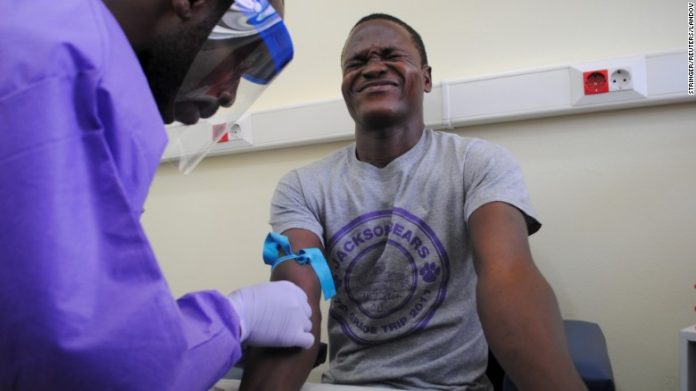The climate crisis is going to raise the risk that Ebola will spread farther and reach areas previously unaffected by the virus, according to a study published Tuesday in the journal Nature Communications.
The study found that the climate crisis will bring a 1.75 to 3.2-fold increase in the rate at which the deadly virus spills over from animals to humans by 2070.
There will be an increased risk of more devastating outbreaks in areas of Africa that haven’t seen outbreaks before under all of the climate warming scenarios the researchers looked at, including if humans cut their carbon emissions significantly or only slightly. Higher temperatures and slower social and economic development would lead to greater risk.
In west and central Africa, where outbreaks have traditionally clustered, outbreaks would happen more frequently and spread farther, via airlines, to previously unaffected areas, the researchers suggested. Using the current network of airline flights in their model, the study suggests that there is a high risk of Ebola spreading to China, Russia, India, Europe and the United States.
The first Ebola outbreak was identified in 1976 and there have been 23 outbreaks recognized since. There’s still more research to be done on exactly how these outbreaks start, but scientists suspect Old World fruit bats that carry the disease may be at least in part be to blame. They also believe contact between humans, great apes and duikers — a small brown antelope — may be connected to these outbreaks.
Ebola is a rare but deadly disease. It has no cure and there is no approved vaccine, although there is a concerted effort to create one. Health officials remain hopeful about an experimental vaccine that has been widely used in the current outbreak in the Democratic Republic of Congo.
Researchers figure Ebola outbreaks will increase due to the environmental conditions brought by the climate crisis such as higher temperatures.
Previous research has shown that climate can impact animals that carry the disease like fruit bats. If there is more rainfall — something predicted with warming temperatures, for instance — there will be more fruit for the bats to eat.
More fruit means more bats, that will reproduce more and also come into contact with more animals as they come together to eat this food, further increasing the likelihood that humans will come into contact with them.
Conversely, if it’s a year with drought, another scenario possible with warming temperatures, farmers that can’t grow enough to feed their families might have to venture farther into the forest for food, increasing the chances they will come into contact with the forest animals such as bats, that carry Ebola.
Ebola will also likely spread due to the projected human population growth and the limited health care in the African region. The authors created a mathematical model to take these multiple factors into account and determine exactly how much more frequent outbreaks will be.
Other studies have found that disease spread by animals, not just Ebola, will become more frequent due to the climate crisis and will make many more people sick. About two-thirds of human infectious diseases start with animals like mosquitoes — and mosquitoes love a warmer and wetter climate.
Climate change can have unimaginable damaging effects
The climate crisis may already be a factor in the spread of some diseases. Studies of the recent rise of the mysterious superbug C. auris connect it to the climate crisis.
In addition to the spread of Ebola, scientists predict higher temperatures will bring more cases of malaria, diarrhea, heat stress, heart defects, malnutrition and antibiotic resistant diseases.
Ultimately, scientists believe the climate crisis could “halt and reverse” progress made in human health over the past century, experts say. The World Health Organization predicted that rising global temperatures could lead to many more deaths than the 250,000 deaths a year it predicted just five years ago.
Source: cnn.com




